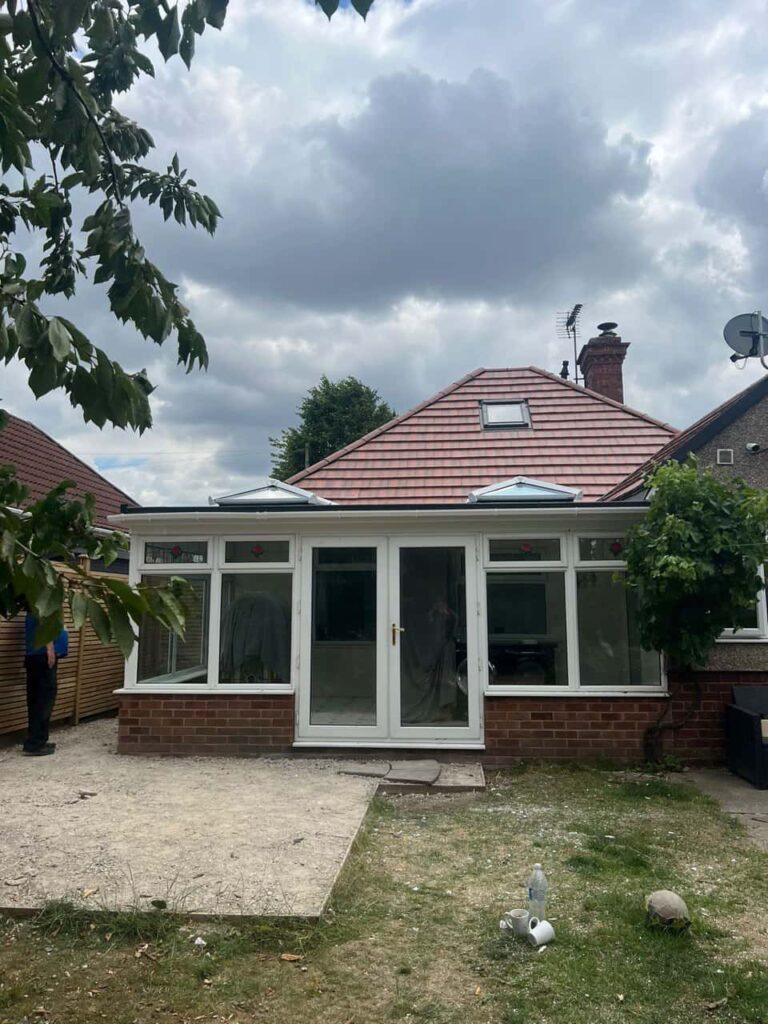When it comes to roof maintenance, most homeowners focus on tiles, slates, and gutters — yet the flashing is one of the most critical elements protecting your home from water ingress. Flashing fatigue is a subtle but serious issue that can go unnoticed until damage is already done. At Borrowash Roofing Repairs, we regularly inspect properties across Borrowash, Derbyshire and often find that small issues with flashing are the hidden cause behind leaks, damp patches, and long-term roof deterioration.
In this guide, we’ll uncover the lesser-known signs of flashing fatigue, why they matter, and what to do if you spot them.
What Is Roof Flashing?
Flashing refers to the thin strips of metal or lead installed around joints and edges on your roof — such as chimneys, valleys, roof vents, dormers, skylights, and where the roof meets walls. Its primary function is to direct water away from vulnerable areas and prevent it from seeping into your roof structure.
Common materials used for flashing include:
- Lead (traditional and long-lasting)
- Aluminium
- Galvanised steel
- Copper
- EPDM or rubber for flat roofs
Over time, even the highest quality flashing can wear down — a condition known as flashing fatigue.
What Causes Flashing Fatigue?
Flashing fatigue develops gradually due to various environmental and structural factors:
- Thermal expansion and contraction: Repeated heating and cooling causes the flashing to expand and contract, leading to cracks or displacement.
- Weather exposure: Heavy rainfall, ice, wind and UV rays degrade both the metal and its sealants over time.
- Improper installation: If flashing is poorly fitted or secured with inferior materials, it can loosen prematurely.
- Movement in roof structure: Subsidence or general ageing can shift the flashing out of place, creating gaps.
Subtle Signs of Flashing Fatigue to Watch For
Flashing failure rarely presents itself immediately. Instead, it shows through smaller, often overlooked issues. Homeowners in Borrowash should be vigilant for these less obvious indicators:
1. Discoloured or Damp Patches on Internal Walls and Ceilings
- Moisture penetrating through worn flashing may appear as faint marks near chimneys, loft edges, or skylights.
- These may worsen during or after rainfall, but can be mistaken for condensation or pipe leaks.
2. Rust Staining on Brickwork
- If the flashing is metal and beginning to corrode, rust can stain the exterior masonry beneath the roofline.
- These streaks may appear orange or reddish and often go unnoticed behind downpipes or near chimneys.
3. Small Cracks Around Roof Joints
- From the ground, you might spot fine cracks at the base of chimney stacks or where vertical walls meet the roof.
- These are often the first signs that the flashing has lifted or the sealant has failed.
4. Wind Whistling or Draughts in the Loft
- Displaced flashing can create gaps where wind enters the roof space, causing cold draughts or unusual noises during storms.
5. Moss or Vegetation Build-Up in Flashing Valleys
- Flashing installed in roof valleys may collect water or debris if it is sagging or misshaped.
- Accumulated moss indicates pooling water and poor drainage — a sign the flashing is no longer functioning as it should.
6. Loose or Curling Flashing Edges
- On visual inspection, edges of flashing may begin to curl upwards or appear uneven.
- This allows water to run beneath instead of being channelled away.
The Risks of Ignoring Flashing Fatigue
Failing flashing, even in a small section, can compromise the overall integrity of your roof. If left untreated, the consequences may include:
- Water ingress and damp in the loft or upper floors
- Rotting roof timbers and ceiling joists
- Internal plaster damage and mould growth
- Energy loss through insulation saturation
- Increased repair costs for associated damage
At Borrowash Roofing Repairs, we’ve seen minor flashing issues turn into full roof replacements simply because they were ignored for too long.
Preventing Flashing Problems
Preventative maintenance is key to extending the life of your roof’s flashing. Here’s how:
- Annual inspections: Have your roof professionally inspected at least once a year, especially after extreme weather.
- Prompt repairs: Address any signs of wear, cracks or watermarks as soon as they appear.
- High-quality materials: When replacing flashing, use durable materials like lead or coated steel with proper fixings.
- Sealant checks: Ensure all surrounding sealants are flexible, secure, and not cracked or peeling.
Professional Flashing Repairs in Borrowash, Derbyshire
Flashing repairs require experience and care. At Borrowash Roofing Repairs, we offer expert diagnosis and long-lasting repair solutions for all types of flashing, whether it’s traditional leadwork or modern flat-roof applications. Our team understands the impact of local weather on roof structures in Borrowash, Derbyshire and provides tailored services for homes and commercial buildings alike.
Conclusion
Flashing fatigue may be easy to miss, but its impact can be serious and expensive if ignored. Recognising the early warning signs — from internal damp patches to external rust staining — can save you from much larger repairs. If you’re based in Borrowash, Derbyshire and suspect your roof flashing may be deteriorating, contact Borrowash Roofing Repairs for a detailed inspection and expert repair service.
Call us on: 01332 215 195
Click here to find out more about Borrowash Roofing Repairs
Click here to complete our contact form and see how we can help with your roofing needs.

